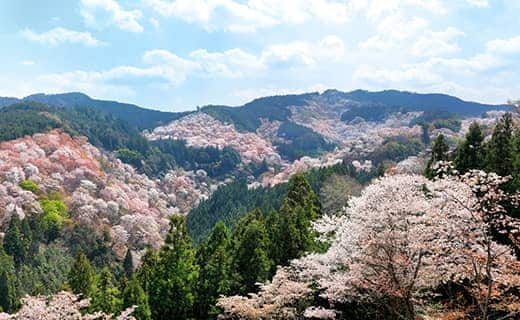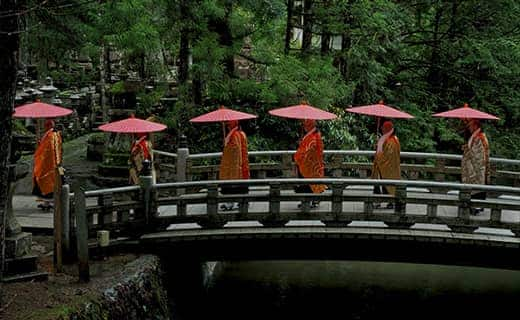Discover the Unknown Charm of the Kansai Area Through a Tour by Train of the World Heritage Sites
ABOUT
KANSAI

The Kansai area is located in the western part of Japan, and it includes six prefectures: Osaka, Kyoto, Shiga, Nara, Hyogo, and Wakayama. It is famous for being one of Japan's most in-demand sightseeing areas. It's also highly accessible from the capital, Tokyo, so it's an easy place to visit.


Attractive things
you can only encounter in Kansai
Kansai has a lot to offer, and there are a variety of different spots we could recommend to you. For this installment, we'll introduce recommended routes based on the theme of "sacred sites" which also include some other core elements of Japanese culture, green tea and Japanese sake.
-

Sacred Sites
There are numerous historic and unique sacred mountains in the Kansai area. They have become popular tourist destinations, as visitors can casually go for a hike while packing lightly and enjoy divine, majestic atmospheres and the representative four seasons of Japan.
-

Green Tea
Japanese tea comes in a variety of forms such as matcha, a powdered tea, sencha, green tea made with steamed leaves, and hojicha, roasted green tea. The Kansai area is home to one of Japan's three most popular tea brands, Ujicha, and this tour allows you to experience Japan's cultural history through authentic tea.
-
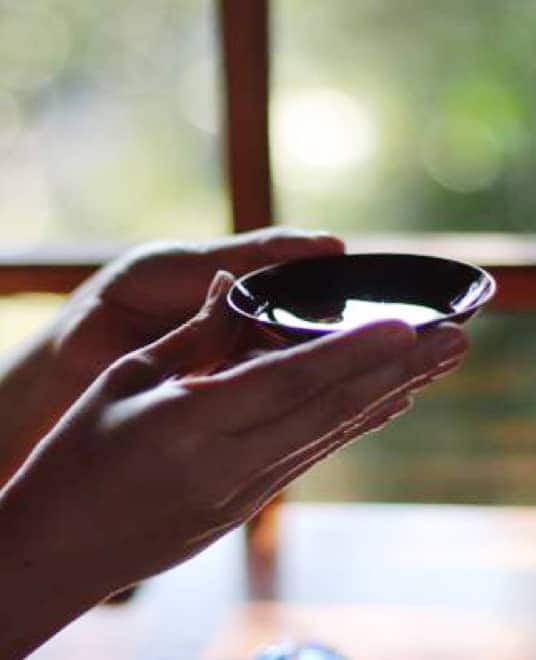
Japanese Sake
The key factors for producing great tasting Japanese sake, an alcoholic beverage becoming increasingly popular worldwide, are high quality rice and clean water. By all means stop by the Kansai area and try out some local varieties you can't find anywhere else.
3 RECOMMENDED
ITINERARIES
Route 1
HIEIZAN
Mount Hiei
Enryakuji Temple on Mount Hiei is known as the "birthplace of Buddhism in Japan" and is the headquarters of the Tendai sect of Mahayana Buddhism, having been established by Saicho over 1,200 years ago. Although a visit to Enryakuji Temple is its main attraction, this route is also filled with the charms of Fushimi and Uji in Kyoto through sake tasting and a tea ceremony experience.

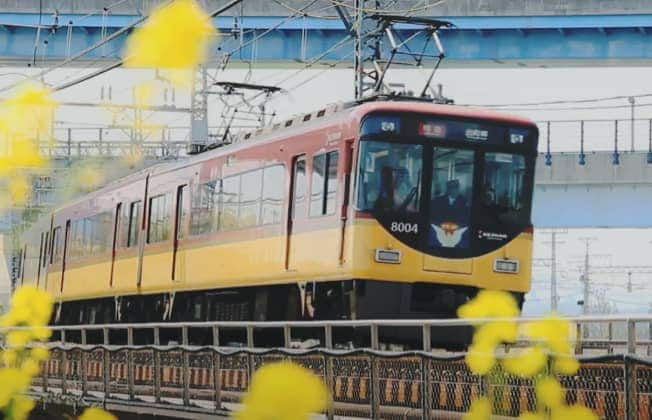
Get
Around
Keihan Railway
The Keihan Railway connects Osaka and Kyoto, and is highly convenient for sightseeing, as Fushimi Inari Taisha, Kiyomizu-dera Temple, the Gion area, and the Uji area, all destinations that are well-known overseas, are along their line.
Go to the Official WebsiteRoute 2
YOSHINO-YAMA
Mount Yoshino
Although Yoshinoyama is known as the best place to look at cherry blossoms in Japan, it is appealing throughout the four seasons, as the mountains are painted red with crimson leaves in the autumn. On this route, you can fully enjoy Japan's four seasons through various experiences, such as Asuka that is full of Japanese history, as well as Yoshinoyama, aboard a luxury tourist limited express train.
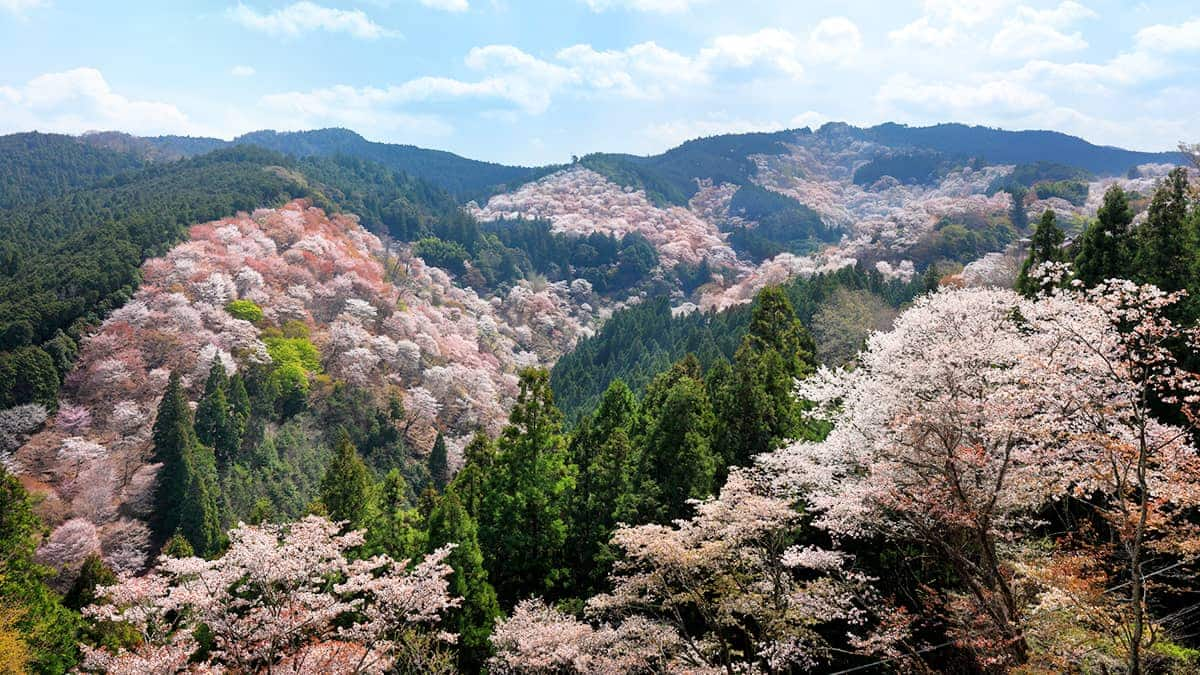

Get
Around
Kintetsu Railway
The Kintetsu Railway is the best option for traveling between Osaka and Yoshino or Asuka in Nara. You can also take the main line further out and visit other places like Toba and Ise-Shima in Mie Prefecture.
Go to the Official WebsiteRoute 3
KOYASAN
Koyasan was founded by Kobo Daishi, and it's one of the most sacred sites for Japanese Buddhism. This sightseeing spot was registered as a UNESCO World Heritage Site in 2004 and awarded a 3-star rating in the Japanese-language version of the Michelin Travel Guide. It is also highly-praised by the tourists who visit. Using a tour ticket, this route allows you to experience Japanese Buddhist culture by spending the night in a temple.
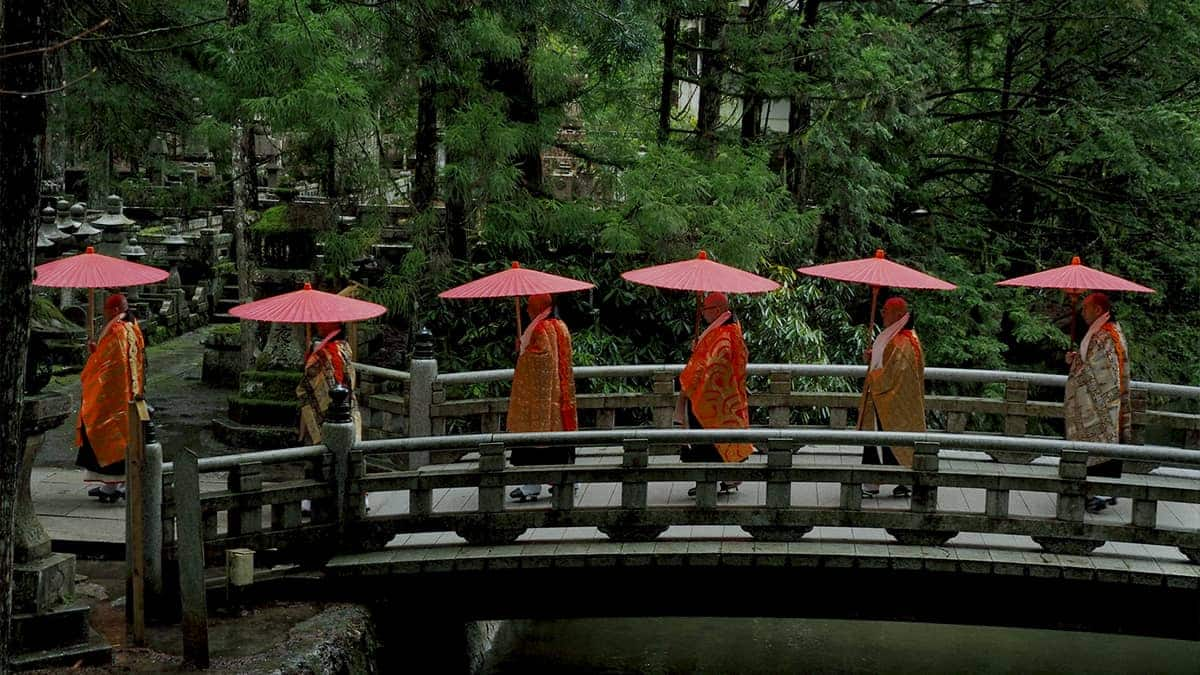
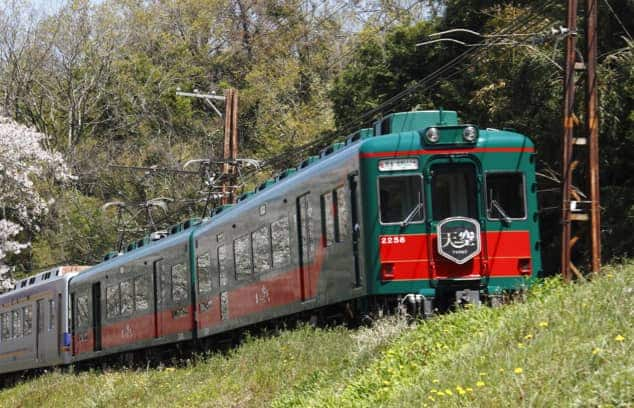
Get
Around
Nankai Electric Railway
Nankai Main Line runs from Wakayama through Kansai International Airport and on to Osaka. The Nankai Koya Line links Osaka and Wakayama, and it's the main transportation method used to visit Koyasan.
Go to the Official Website

Access to Kansai
Kansai International Airport and Osaka Itami Airport provide convenient access to the Kansai area. There are lots of flights to both of these airports from Tokyo.
What to do in Kansai
Iwashimizu-Hachimangu Shrine
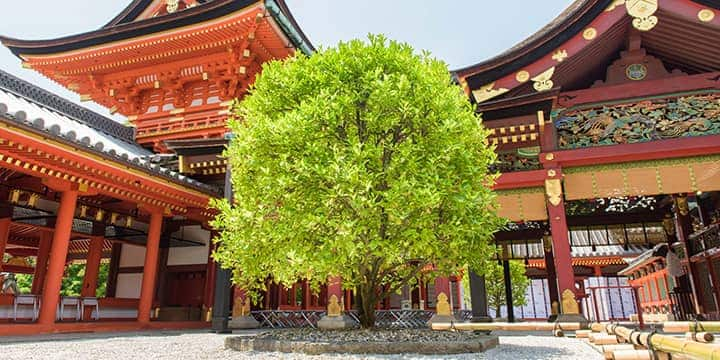
Affectionately known as "Yawata no Hachiman-san" (Mr. Yawata no Hachiman) by locals, Iwashimizu Hachimangu Shrine is a beautiful vermillion-lacquered shrine, and one of the three major Japanese shrines to Hachiman. The main building was designated a national treasure in 2016. While the exterior is beautiful by itself, the carvings in the interior are absolutely stunning, featuring over 150 distinct motifs.
Location
| Name | Iwashimizu-Hachimangu Shrine |
|---|---|
| Address | 30 Yawatatakabo, Yawata, Kyoto |
| Exit Station | From Iwashimizu-hachimangu station on the Keihan Main Line, take the Iwashimizu-hachimangu-sando cable car and get off at Hachimangu sanjo station, then walk for approximately 5 minutes. |
| Visiting Hours | 5:30 to 18:30 |
| Closed | None |
| Entry Fee | Free |
| Website | (In Japanese) http://www.iwashimizu.or.jp/ |
Information contained herein is as of the posting of this webpage. For the latest information, please refer to the websites of respective facilities.
Yoshino Mikumari Shrine

A World Cultural Heritage site, this shrine, with its main deity of Ame-no-Mi-Kumari Okami, the divider of water, also enshrines Tamayori-Hime-no-Mikoto as well as six other gods.
Also known as the "nanny’s shrine," its gods are also worshipped as gods of children. The current main building, its main shrine a designated important cultural property of Japan, was rebuilt in 1604, and retains the beautiful architectural style of that time, as well as a strong religious connection to the gods of conception, pregnancy, and guardianship of children. Toyotomi Hideyoshi visited the shrine to pray for conception, and the child he was subsequently granted, Hideyori, rebuilt the main building in 1604. The main shrine, hall of offerings, hall of worship and tower gate, built in the Momoyama architectural style, are beautiful structures designated important cultural properties of Japan. In spring, the weeping cherry blossom trees are also extremely beautiful.
Location
| Name | Yoshino Mikumari Shrine |
|---|---|
| Address | 1612 Yoshinoyama, Yoshino-cho, Yoshino-gun, Nara |
| Exit Station | From Yoshino Station on the Kintetsu-Yoshino Line, take the Yoshinoyama Ropeway and get off at Yoshinoyama Station. Then take the local bus, get off at Okusenbonguchi bus stop, and walk for approximately 20 munutes. * The bus service is suspended during winter. |
| Visiting Hours | 8:00 to 16:00 (sometimes closes early) |
| Closed | No regular closing days |
| Entry Fee | Free |
| Website | https://www.visitnara.jp/venues/A00534/ |
Information contained herein is as of the posting of this webpage. For the latest information, please refer to the websites of respective facilities.
Kada Beach

A natural beach with calm, shallow waters. This family-friendly location is the only beach in Wakayama City where visitors can enjoy barbecues on the beach. The islands of Tomogashima, visible from the beach, take on different forms with the changing of the days. When the weather is nice, the sun setting amongst the islands is beautiful enough to earn it a place in Japan’s 100 Best Sunsets.
Location
| Name | Kada Beach |
|---|---|
| Address | Kada-kitanohama, Wakayama-shi, Wakayama |
| Exit Station | Approximately 15 minutes' walk from Kada Station on the Nankai Kada Line |
| Visiting Hours | 9:00 to 17:00 |
| Operating Period | 29th June to 1st September * Opens every day during this period |
| Inquiries | Kada Tourism Association Tel: 073-459-0003 |
| Website | (In Japanese) http://www.kada.jp/ |
Information contained herein is as of the posting of this webpage. For the latest information, please refer to the websites of respective facilities.
Kennin-ji Temple

The oldest Zen temple in Tokyo, Kennin-ji Temple was built by Eisai, the priest who brought the Rinzai school of Buddhism to Japan over 800 years ago. The interior features paintings of the gods Raijin and Fujin (displayed in reproduction), while the ceiling of the lecture hall features an internationally renowned painting of two dragons. Eisai is known as the "Godfather of Tea" for his efforts to bring the beverage, previously limited to the upper classes, to the common people, and a stone monument celebrates this fact, while tea plants form the hedges that line the grounds.
Location
| Name | Kenninji Temple |
|---|---|
| Address | Komatsu-cho, Shijo-sagaru, Yamatooji-dori, Higashiyama-ku, Kyoto-shi, Kyoto |
| Exit Station | Approximately 5 minutes' walk from Gion-shijo Station on the Keihan Railway |
| Business Hours | 10:00 to 17:00 |
| Closed | None |
| Entry Fee | Adult: 600 yen High school or Junior high school student: 300 yen Elementary school student: 200 yen * Admission for children aged 5 and under is free |
| Website | https://www.kenninji.jp/english/ |
Information contained herein is as of the posting of this webpage. For the latest information, please refer to the websites of respective facilities.
Shigisan Chogosonshi-ji Temple

At Shigisan Chogosonshi-ji Temple, tigers are considered familiars (symbols) of Bishamon Tenno, the main god enshrined there, so papier-mache tigers can be seen everywhere you look. There is also a magnificent sweeping view of the Nara Basin from the main hall, but it is particularly well known as an excellent spot for cherry blossom viewing, with cherry blossoms lit by stone lanterns and mercury lamps at night as the main attraction.
Location
| Name | Shigisan Chogosonshi-ji Temple |
|---|---|
| Address | 2280-1 Shigisan, Heguri-cho, Ikoma-gun, Nara |
| Exit Station | Weekdays: From Kintetsu Shigisanshita Station, take a bus, get off at Shigiohashi bus stop and walk for approximately 5 minutes. Weekends and national holidays: From Kintetsu Shigisanshita Station, take a bus, get off at Shigisan bus stop and walk for approximately 10 minutes. From Kintetsu Oji Station, take a bus, get off at Shigiohashi bus stop and walk for approximately 5 minutes. |
| Visiting Hours | 8:30 to 17:30 (April to September) 9:00 to 17:00 (October to March) |
| Closed | None |
| Website | http://www.sigisan.or.jp/english.html |
Information contained herein is as of the posting of this webpage. For the latest information, please refer to the websites of respective facilities.
SERENO seafood&cafe

Take the Medetai Train to Kada and discover this stylish seafood restaurant and cafe. Made from a renovated traditional Japanese home, visitors are greeted with a attractive interior. The name Sereno is Italian and means “fine weather.” Lunch features fresh fish dishes. Stop by for a wonderful dining experience.
Location
| Name | SERENO seafood&cafe |
|---|---|
| Address | 1455 Kada, Wakayama-shi, Wakayama |
| Exit Station | Approximately 10 minutes' walk from Kada Station on the Nankai Kada Line |
| Opening Hours | 11:30 to 17:00 |
| Closed | Wednesday |
Information contained herein is as of the posting of this webpage. For the latest information, please refer to the websites of respective facilities.
Fukujuen Ujicha Kobo
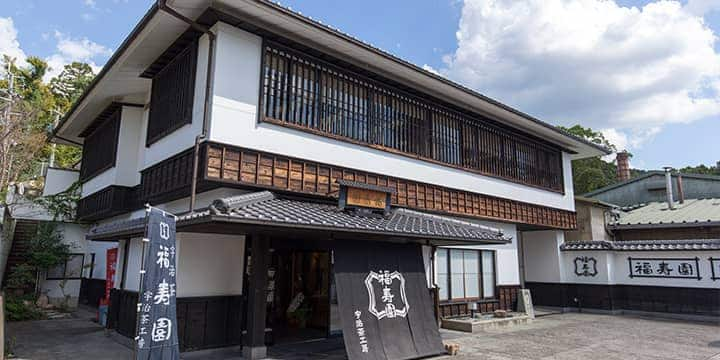
A facility near the Uji River where visitors can experience traditional Uji tea culture. Various tea-related workshops are available, including stone mill matcha (powdered tea) making. In the tea dormitory, enjoy tea alongside matcha-flavored ice parfaits, chazuke (a tea-on-rice dish), and other tea-themed dishes. Visitors can also buy traditional Uji tea and visit the facility’s museum. The location offers an entire day’s worth of tea-related delights.
Location
| Name | Fukujuen Ujicha Kobo |
|---|---|
| Address | 10 Ujiyamada, Uji-shi, Kyoto |
| Exit Station | Approximately 6 minutes' walk from Uji Station on the Keihan Uji Line |
| Opening Hours | 10:00 to 17:00 (Fukuju Tea Dormitory Last Order at 16:00) |
| Closed | Monday (the following day if a public holiday falls on Monday) |
| Workshop Fees | Workshop Fees: Hand-rolled tea making: 15,000 yen + tax per group (up to five people) Ceramic tile Uji tea making: 2,500 yen + tax Hojicha making: 1,500 yen + tax Stone mill matcha making: 1,200 yen + tax Ceramics making: One item 3,500 yen + tax Two items 5,500 yen + tax Three items 6,500 yen + tax Tea incense burner making One item 6,500 yen + tax Ceramics painting: Small plate 3,000 yen + tax Teacup 5,000 yen + tax Sencha etiquette course: 2,000 yen + tax Matcha etiquette course: 2,000 yen + tax |
| Inquiries | Tel: 050-3152-2930 |
| Note | * Some reservations may not be possible due to teacher scheduling. |
| Website | http://www.fukujuen.com/en/index.html |
Information contained herein is as of the posting of this webpage. For the latest information, please refer to the websites of respective facilities.
Chikuri-in Gumpoen

This temple, said to have been built by Prince Shotoku, is also famed for its elegant lodging quarters. The Gumpoen garden, said to have been created by classical tea master Sen-no-Rikyu and restored by daimyo Hosokawa Fujitaka, is one of the three great gardens of Yamato province (modern-day Nara).
Location
| Name | Chikurin-in Gumpoen |
|---|---|
| Address | 2142 Yoshinoyama, Yoshino-cho, Yoshino-gun, Nara |
| Exit Station | From Yoshino Station on the Kintetsu-Yoshino Line, take the Yoshinoyama Ropeway and get off at Yoshinoyama Station. Then take the local bus and get off at Chikurin-in Mae bus stop. * The bus service is suspended during winter. * Drop-off and pickup service available from Yoshino Station (requires reservation) * During cherry blossom viewing season: From Yoshino Station, take a Nara Kotsu Bus, get off at Naka-Senbon Park bus stop and walk for approximately 5 minutes. |
| Visiting Hours | 8:00 to 17:00 |
| Closed | None |
| Fee | 400 yen |
| Website | https://www.visitnara.jp/venues/A01251/ |
Information contained herein is as of the posting of this webpage. For the latest information, please refer to the websites of respective facilities.
Sumiyoshi-taisha Shrine
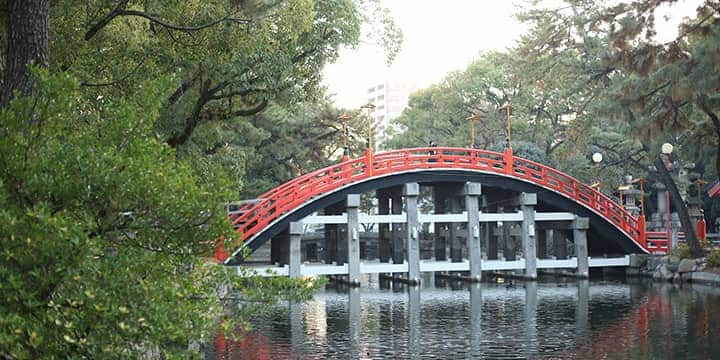
Affectionately called "Sumiyossan" by Osaka locals, this shrine is one of the most popular shrines in Japan. Around two million visitors attend the annual hatsumode New Year’s visit. Sumiyoshi-taisha shrines have long been worshipped for their kami (gods) who protect those traveling by sea. How about stopping by at the beginning of your journey? The shrine also contains many power spots. Perhaps your wishes will come true......
Location
| Name | Sumiyoshi-taisha Shrine |
|---|---|
| Address | 2-9-89, Sumiyoshi, Sumiyoshi-ku, Osaka-shi, Osaka |
| Exit Station | Approximately 3 minutes' walk from Sumiyoshitaisha station on the Nankai Main Line Approximately 5 minutes' walk from Sumiyoshihigashi Station on the Nankai Koya Line Short walk from Sumiyoshitoriimae Station on the Hankai Tramway |
| Visiting Hours | 6:00 to 17:00 (April to September) 6:30 to 17:00 (October to March) * Exceptions may apply for New Year's and summer festival |
| Closed | None |
| Entry Fee | Free |
| Website | http://www.sumiyoshitaisha.net/en/ |
Information contained herein is as of the posting of this webpage. For the latest information, please refer to the websites of respective facilities.
Byodoin Temple
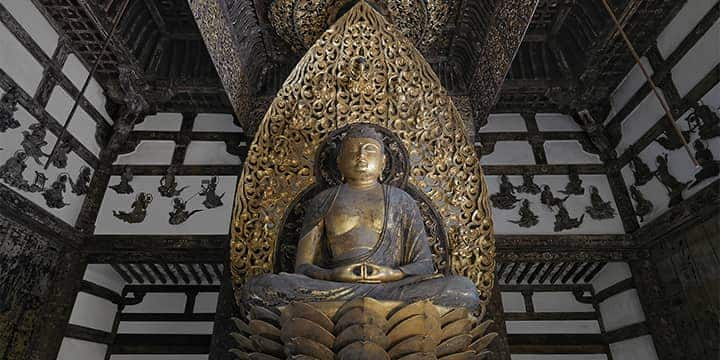
Byodoin Temple was established in 1052. The following year, the beautiful Phoenix Hall was completed. The hall and accompanying garden are said to have been built in imitation of the Buddhist Land of Happiness depicted in Buddhist scriptures. In the connected Hoshokan Museum, visitors can see various treasures, including Buddhist statues from the Heian period (794-1185).
Location
| Name | Byodoin Temple |
|---|---|
| Address | 116 Ujirenge, Uji-shi, Kyoto |
| Exit Station | Uji Station, Keihan Uji Line |
| Visiting Hours | Garden: 8:30 to 17:30 (Reception closes at 17:15) Phoenix Hall viewing: 9:30 to 16:10 (Reception opens at 9:00 and ends when spots fill) Byodoin Hoshokan Museum: 9:00 to 17:00 (Reception closes at 16:45) Museum shop: 9:00 to 17:00 Team Room Toka: 10:00 to 16:30 (Last order at 16:00) Seal office: 9:00 to 17:00 |
| Closed | None * Tea Room Toka closed on Tuesdays (the following day if a public holiday falls on Tuesday) |
| Entry fee | Garden and Hoshokan Museum Adult: 600 yen High school or Junior high school student: 400 yen Elementary school student: 300 yen * Fees for groups of 25 or larger Adult: 500 yen High school or Junior high school student: 300 yen Elementary school student: 200 yen |
| Inquiries | Tel: 0774-21-2861 |
| Website | https://www.byodoin.or.jp/en/ |
Information contained herein is as of the posting of this webpage. For the latest information, please refer to the websites of respective facilities.
Yoshimizu Shrine

A site with connections to many historical figures, Yoshimizu Shrine houses a number of cultural properties of Japan. As the story of Toyotomi Hideyoshi being deeply moved by the view of the cherry blossoms from the shrine attests, this is the prime spot for viewing the sakura of Mount Yoshino.
Location
| Name | Yoshimizu Shrine |
|---|---|
| Address | 579 Yoshinoyama, Yoshino-cho, Yoshino-gun, Nara |
| Exit Station | From Yoshino Station on the Kintetsu-Yoshino Line, take the Yoshinoyama Ropeway, get off at Yoshinoyama Station, and walk for approximately 35 munutes. |
| Visiting Hours | 9:00 to 17:00 |
| Closed | None |
| Entry Fee | Free entry * Admission to drawing room: 600 yen (Last entry at 16:30) |
| Website | https://www.visitnara.jp/venues/A00533/ |
Information contained herein is as of the posting of this webpage. For the latest information, please refer to the websites of respective facilities.
Nintoku-tenno-ryo Kofun and Daisen Park
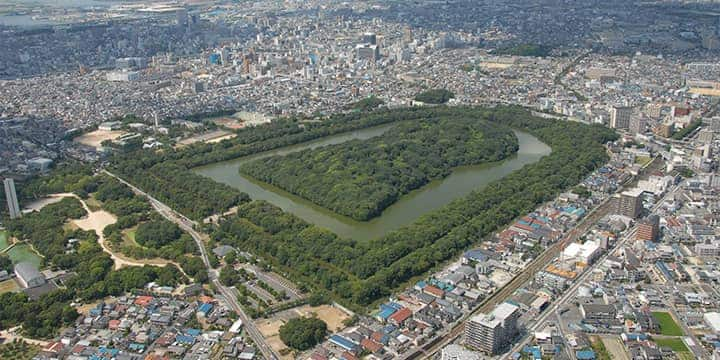
The Mozu-Furuichi Kofun Group was registered as a UNESCO World Heritage Site in July 2019. Among these mounded tombs of ancient Japan, the Nintoku-tenno-ryo Kofun is considered to be one of the top three tombs in the world. Its keyhole shape when viewed from above is unique to Japan. The tomb dates back to the mid-5th century and is thought to have taken around 20 years to construct.
Location
| Name | Nintoku-tenno-ryo Kofun and Daisen Park |
|---|---|
| Address | Daisencho, Sakai-shi, Osaka |
| Exit Station | Mozu Station, JR Hanwa Line |
| Website | https://www.sakai-tcb.or.jp/en/spot/detail/126 |
Information contained herein is as of the posting of this webpage. For the latest information, please refer to the websites of respective facilities.
The Tale of Genji Museum

The Uji-Jujo are the last ten chapters of "The Tale of Genji." Those chapters take place in Uji, where this museum makes its home. Visitors can learn about The Tale of Genji in a hands-on manner through such exhibits as story replicas (including a full-size ox cart), a model of Rokujo-in (the protagonist Hikaru Genji’s residence), and experiences of kaimami (stolen glimpses). Visitors can also view an original anime production and an original film inspired by the Uji-Jujo.
Location
| Name | The Tale of Genji Museum |
|---|---|
| Address | 45-26 Ujihigashiuchi, Uji-shi, Kyoto |
| Exit Station | Uji Station, Keihan Uji Line |
| Opening Hours | 9:00 to 17:00 (Last entry at 16:30) |
| Closed | Mondays (the following day if a public holiday falls on Monday) New Year's Holiday |
| Entry Fee | Adult: 600 yen Child: 300 yen * Fees for groups of 20 or larger Adult: 480 yen Child: 240 yen |
| Inquiries | Tel: 0774-39-9300 |
Information contained herein is as of the posting of this webpage. For the latest information, please refer to the websites of respective facilities.
Odaigahara

Odaigahara features many sights to see. The entire mountain is designated as a special natural monument, and it has also been selected for Japan’s 100 Best Landscapes and Japan’s 100 Best Mysterious Places. There are also courses where anyone can enjoy hiking and mountain climbing casually, so many sightseers come to visit during the autumn season when the fall foliage viewing conditions are best.
Location
| Name | Odaigahara |
|---|---|
| Address | Kotochi, Kamikitayama-mura, Yoshino-gun, Nara |
| Exit Station | From Yamato-Kamiichi Station on the Kintetsu Yoshino Line, take the Nara Kotsu Bus and get off at Odaigahara bus stop. |
| Website | http://vill.kamikitayama.nara.jp/kanko/tanoshimu/odaigahara/# |
Information contained herein is as of the posting of this webpage. For the latest information, please refer to the websites of respective facilities.
Sakai Plaza of Rikyu and Akiko
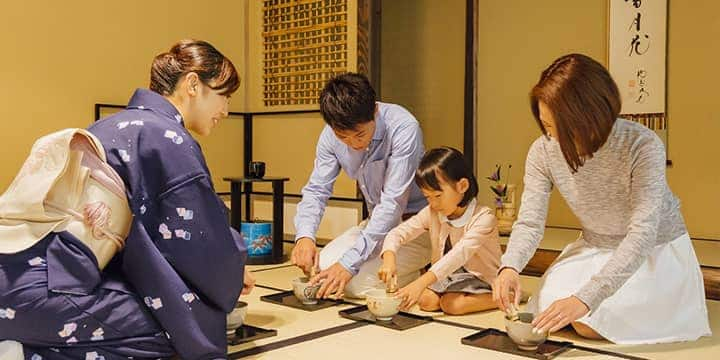
This culture tourism facility introduces visitors to the charm of Sakai’s history and culture through the lives of Sen no Rikyu, who heavily contributed to tea ceremony culture, and the poet Akiko Yosano, who was a pioneer of Japanese modern literature. In the Chanoyu Experience Rooms, visitors can either learn to perform a tea ceremony from tea masters of the three major schools or experience a tea ceremony in the ryurei teicha style, a chair-seated experience featuring matcha, sweets, and tea presented in the Omote-Senke, Ura-Senke, or Mushanokoji-Senke fashions.
Location
| Name | Sakai Plaza of Rikyu and Akiko |
|---|---|
| Address | 2-1-1 Shukuinnishi, Sakai-ku, Sakai-shi, Osaka |
| Exit Station | Approximately 1 minute walk from Shukuin Station on the Sakai Line Approximately 6 minutes' bus ride from Sakaihigashi Station on the Nankai Koya Line Approximately 10 minutes' walk from Sakai Station on the Nankai Main Line |
| Opening Hours | 9:00 to 18:00 (Last entry at 17:30) * Ryurei teicha hours: 10:00 to 17:00 |
| Closed | Third Tuesday of the month (the following day if a public holiday falls on the day) New Year's Holiday |
| Entry fee | Adult (includes college students): 300 yen High school student: 200 yen Junior high school student and under: 100 yen Ryurei teicha (matcha and Japanese sweets) Adult: 500 yen High school student: 400 yen Junior high school student and under: 300 yen |
| Inquiries | Tel: 072-233-5258 |
| Available Languages | Japanese, English |
| Website | http://www.sakai-rishonomori.com/en/ |
Information contained herein is as of the posting of this webpage. For the latest information, please refer to the websites of respective facilities.
Shijimi Kamameshi Koshu

Funazushi is the root of all sushi. Made of nigorobuna caught from Japan’s biggest lake, Lake Biwa, which is then pickled and fermented together with rice, this sushi is a culinary staple of the Shiga prefecture dating back to the Nara era.
Standing just outside the gates of Ishiyamadera Temple, known as the site where Murasaki Shikibu was inspired to write “The Tale of Genji,” Koshu is a place to enjoy Funazushi and other cuisine made using freshwater fish. Shijimi Kamameshi, a fish, rice and vegetable dish cooked to order in an iron pot, is a deeply flavorful specialty of Koshu.
Location
| Name | Shijimi Kamameshi Koshu |
|---|---|
| Address | 3-2-37 Ishiyama-dera, Otsu, Shiga |
| Exit Station | Ishiyamadera Station, Keihan Ishiyama Sakamoto Line |
| Business Hours | 10:00 to 17:00 |
| Closed | No regular closing days |
Information contained herein is as of the posting of this webpage. For the latest information, please refer to the websites of respective facilities.
Tanzan-jinja Shrine
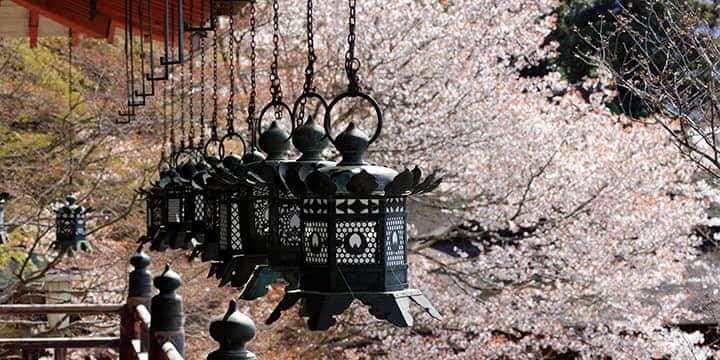
Distinguished by having the only 13-story pagoda in Japan and known for its beautiful fall foliage, Tanzan-jinja Shrine is dedicated to Fujiwara no Kamatari, an influential statesman of the Asuka period (552-646). Climb the 130 steps leading through the torii gate to the main shrine, look out at the natural vista from the worship hall lined with hanging lanterns, and enjoy the captivating scenery.
Location
| Name | Tanzan-jinja Shrine |
|---|---|
| Address | 319 Tonomine, Sakurai-shi, Nara |
| Exit Station | From Sakurai Station on the Kintetsu Osaka Line, take the Nara Kotsu Bus and get off at Tanzan Jinja bus stop, then walk for approximately 5 minutes. |
| Visiting Hours | 8:30 to 16:30 |
| Closed | None |
| Entry Fee | 600 yen |
| Website | http://www.tanzan.or.jp/english/ |
Information contained herein is as of the posting of this webpage. For the latest information, please refer to the websites of respective facilities.
Sakai Traditional Crafts Museum
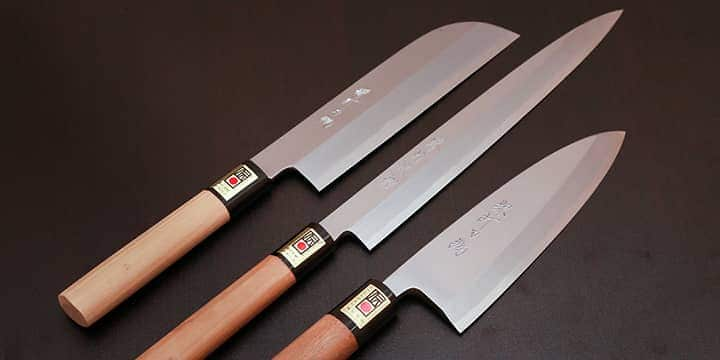
Here, visitors can enjoy Sakai’s traditional industries in one convenient location. In addition to a shop featuring notable crafts and products from Sakai, the museum also features a knife exhibit and workshop/exhibit corners where visitors can learn about knives, incense, Chusen cotton, kelp, bicycles, Japanese sweets, and other items.
Location
| Name | Sakai Traditional Crafts Museum |
|---|---|
| Address | 1-1-30 Zaimokucho, Sakai-ku, Sakai-shi, Osaka |
| Exit Station | From Myokokujimae Station on the Hankai Tramway, take the Nankai Bus and get off at Hanataguchi bus stop. |
| Opening Hours | 10:00 to 17:00 |
| Closed | New Year's (12/29 - 1/3) * The museum may be irregularly closed for safety inspections. |
| Entry Fee | Free |
| Inquiries | Tel: 072-227-1001 |
| Available Languages | Japanese, English |
| Website | https://www.sakaidensan.jp/en |
Information contained herein is as of the posting of this webpage. For the latest information, please refer to the websites of respective facilities.
Omi jingu Shrine

Omi jingu shrine is situated close to the center of Otsu, in the ruins of Omi Otsu no Miya, the capital of Emperor Tenji’s Japan. Visitors can enjoy the contrast between the vivid vermillion gate on the grounds and the calming appearance of the main building.
The first poem that appears in the classical Japanese anthology “Ogura Hyakunin Isshu” was written by Emperor Tenji, and thus Omi jingu shrine is known as the “karuta shrine” (karuta being a traditional Japanese card game involving matching lines of poems from Ogura Hyakunin Isshu). The Competive Karuta Master and Queen tournament, in which players compete to be the best competitive karuta player in Japan, is frequently held here.
Location
| Name | Omi Jingu Shrine |
|---|---|
| Address | 1-1 Jingu-cho, Otsu-shi, Shiga |
| Exit Station | Approximately 9 minutes' walk from Omijingumae Station on the Keihan Ishiyama Sakamoto Line |
| Visiting Hours | 6:00 to 18:00 |
| Closed | None |
| Entry Fee | Free |
| Website | (In Japanese) http://oumijingu.org/ |
Information contained herein is as of the posting of this webpage. For the latest information, please refer to the websites of respective facilities.
Hasedera Temple
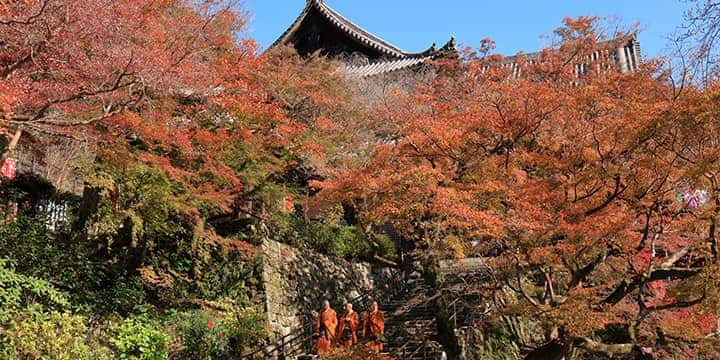
Secluded in the hills outside central Nara and surrounded by gorgeous flowers, this historic temple offers spectacular views, particularly during the cherry blossom and fall foliage seasons. After a leisurely walk through the charming temple town, you can climb the covered stairs to come face to face with the main attraction, a magnificent 12-meter tall standing statue of the Eleven-faced Kannon Bosatsu.
Location
| Name | Hasedera Temple |
|---|---|
| Address | 731-1 Hase, Sakurai-shi, Nara |
| Exit Station | Approximately 15 minutes' walk from Hasedera Station on the Kintetsu Osaka Line |
| Business Hours | 8:30 to 17:00 (April to September) 9:00 to 17:00 (October, November, and March) 9:00 to 16:30 (December to February) |
| Closed | None |
| Entry Fee | 500 yen |
| Website | https://www.hasedera.or.jp/free/?id=345 |
Information contained herein is as of the posting of this webpage. For the latest information, please refer to the websites of respective facilities.
Nyonindo Temple
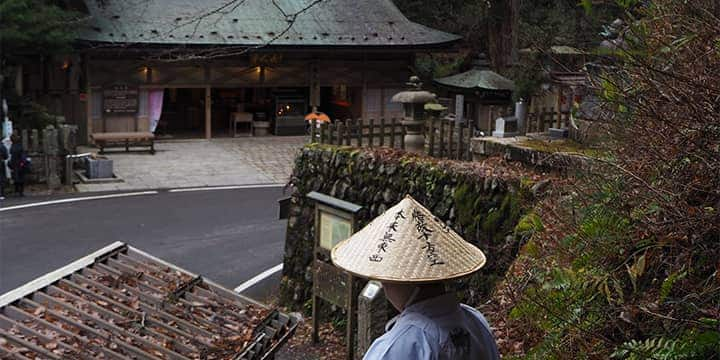
The halls are a remnant of the time when women were forbidden from entering Koyasan. It is said that these halls were built at the end of each of the seven walking trails leading to Koyasan, and they were used as sanctuaries for the women who were not permitted to enter the mountains. The trails made by women between the Nyonindo Halls, called Nyoninmichi, are a registered World Heritage. It also recently received Japan Heritage registration as “Nyonin-Koya.”
Location
| Name | Nyonindo Temple |
|---|---|
| Address | 709 Koyasan, Koya-cho, Ito-gun, Wakayama |
| Exit Station | From Koyasan Station on the Nankai Koya Line, take the Nankai Rinkan Bus Koyasannai Line and get off at Nyonindo-mae bus stop, |
| Business Hours | 8:30 to 17:00 |
| Closed | None |
| Entry Fee | Free |
Information contained herein is as of the posting of this webpage. For the latest information, please refer to the websites of respective facilities.
Honke Tsuruki Soba

Located in Sakamoto, the town that flourished around Enryakuji Temple on Mount Hiei, this restaurant has served hand-made soba for 300 years, paying uncompromising attention to each ingredient, and maintaining its traditional flavors and techniques. In Sakamoto, a town that grew to fulfil the dining needs of Enryakuji Temple on Mount Hiei (now a World Heritage site), monks in training are said to have filled their empty stomachs on soba after finishing their ascetic fasting training on the mountain.
Location
| Name | Honke Tsuruki Soba |
|---|---|
| Address | 4-11-40 Sakamoto, Otsu-shi, Shiga |
| Exit Station | Approximately 1 minute walk from Sakamoto-Hieizanguchi Station on the Keihan Ishiyama Sakamoto Line |
| Business Hours | 10:00 to 17: 30 (Last order at 17:00) |
| Closed | Third Friday of the month New Year's Day * The regular closing day changes to third Thursday in January and June, and there will be no closing day in August and November. |
Information contained herein is as of the posting of this webpage. For the latest information, please refer to the websites of respective facilities.
Fukunishi Washi Honpo
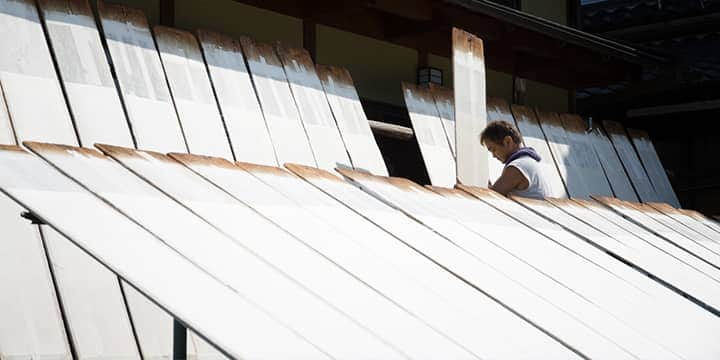
The technique of handmaking Yoshino washi (traditional Japanese paper) is said to date back over 1,300 years.
Fukunishi Washi Honpo has uncompromisingly maintained the papermaking method handed down since long ago, taking advantage of Yoshino’s abundant natural landscape, water, and climate. Making udagami (Uda-style paper) with ancient traditional techniques using glistening mountain water, each sheet is still dried in sunlight to this day.
Handmade udagami made using ancient methods. Recognized for its high quality, this paper is also used to in reproductions of Japanese works of art for display in overseas museums. Visitors can also get hands-on experience with traditional papermaking (reservation required).
Location
| Name | Fukunishi Washi Honpo |
|---|---|
| Address | 218-1 Kubogaito, Yoshino-cho, Yoshino-gun, Nara |
| Exit Station | Approximately 20 minute's taxi ride from Yamato-Kamiichi Station on the Kintetsu-Yoshino Line |
| Business Hours | 8:00 to 17:00 |
| Closed | No regular closing days |
| Fee | Hands-on: 1,600 yen/person, reservation required (parties of 10 or more only) |
Information contained herein is as of the posting of this webpage. For the latest information, please refer to the websites of respective facilities.
Kadohama Goma-tofu sohonpo
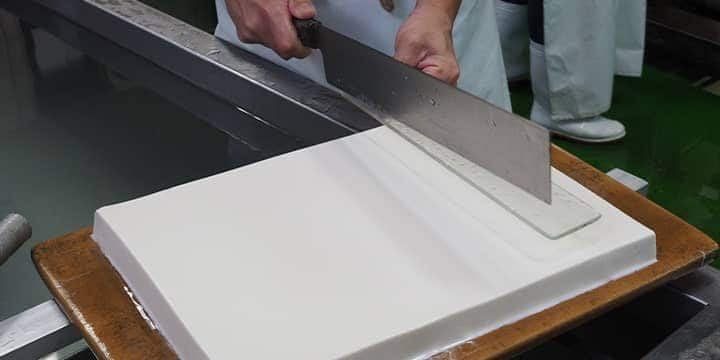
Goma-tofu (tofu made from sesame) is one of the signature foods of Koyasan. The outer skin of Koyasan goma-tofu is shaved off so that it is pure white, making it highly visually appealing, and imparting a uniquely smooth yet sticky mouthfeel. The combination of sesame and arrowroot starch is commonly used in herbal medicine dishes, so it is easily digested. In the restaurant section of the Kadohama Goma-tofu flagship store, you can enjoy freshly-made goma tofu prepared in a variety of ways.
Location
| Name | Kadohama Goma-tofu sohonpo |
|---|---|
| Address | 262 Koyasan, Koya-cho, Ito-gun, Wakayama |
| Exit Station | From Koyasan Station on the Nankai Koya Line, take the Nankai Rinkan Bus Koyasannai Line and get off at Senjuin-bashi bus stop, |
| Business Hours | 11:00 to 17:00 |
| Closed | No regular closing days |
| Cafe Business Hours | 9:30 to 17:00 |
| Inquiries | TEL: 0736-26-8700 |
Information contained herein is as of the posting of this webpage. For the latest information, please refer to the websites of respective facilities.











